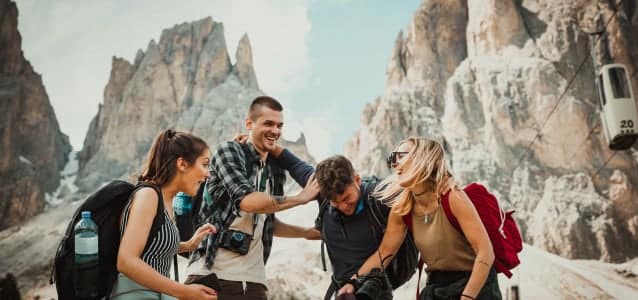The native people of the Americas are widely believed to have crossed the Bering Strait from the Asian Continent to North America at least 16,500 years ago. They moved through Canada, all the way down to South America, with some groups stopping and settling at different locations along the way. Some settled in the United States region known as the American Southwest, an area that is very much historically and culturally relevant.
Traditionally, the Southwest is comprised of 8 states: Arizona, California, Colorado, Nevada, New Mexico, Oklahoma, Texas and Utah. Among these states, there are some differences in climate and terrain. The mountain areas are cool and experience precipitation for example, while the low-lying desert areas are very hot and dry, but there is a common history that binds the American Southwest.
One of the earliest groups of migrants to the Americas, the Clovis people, settled in the Southwest about 13,000 years ago then disappeared as a unique society 3,000 years later. Future groups proved more lasting, establishing societies based on agriculture. Some of the larger and more popular tribes of Native Americans in the Southwest are the Navajo, Apache, Hopi, and the Ute. The Utes lived in what is now Utah, which gets its name from this group of people. Corn, a grain first domesticated in Southern Mexico and Central America, became vital to the Native American diet and allowed these populations to grow. The Navajo are still the largest group of indigenous people with a population of over 300,000.
The 1500s brought European colonization of the Americas with Spain taking over much of the U.S. Gulf regions, areas that are now Mexico, the Caribbean, and the American West. These colonies were important to the Spanish Economy as a source of precious metals. The Spanish language still pervades the Southwest with city names like Santa Fe, San Antonio, and El Paso.
The Spanish grip on the Southwest loosened by the early 1800s, and Mexico declared independence from Spain in 1810. In the 1820s, English-speakers from the east began settling in the part of Mexico that eventually became Texas. These settlers became dissatisfied with the Mexican government and formed an independent land that they called the Republic of Texas. The United States, undergoing a period of expansion, annexed the Republic of Texas, which initiated a war with Mexico for control of much of the Southwest. After the war between the U.S. and Mexico (1846-1848), the U.S. negotiated to receive lands that became the states we know as New Mexico, Arizona, Nevada, Utah, and California.

















